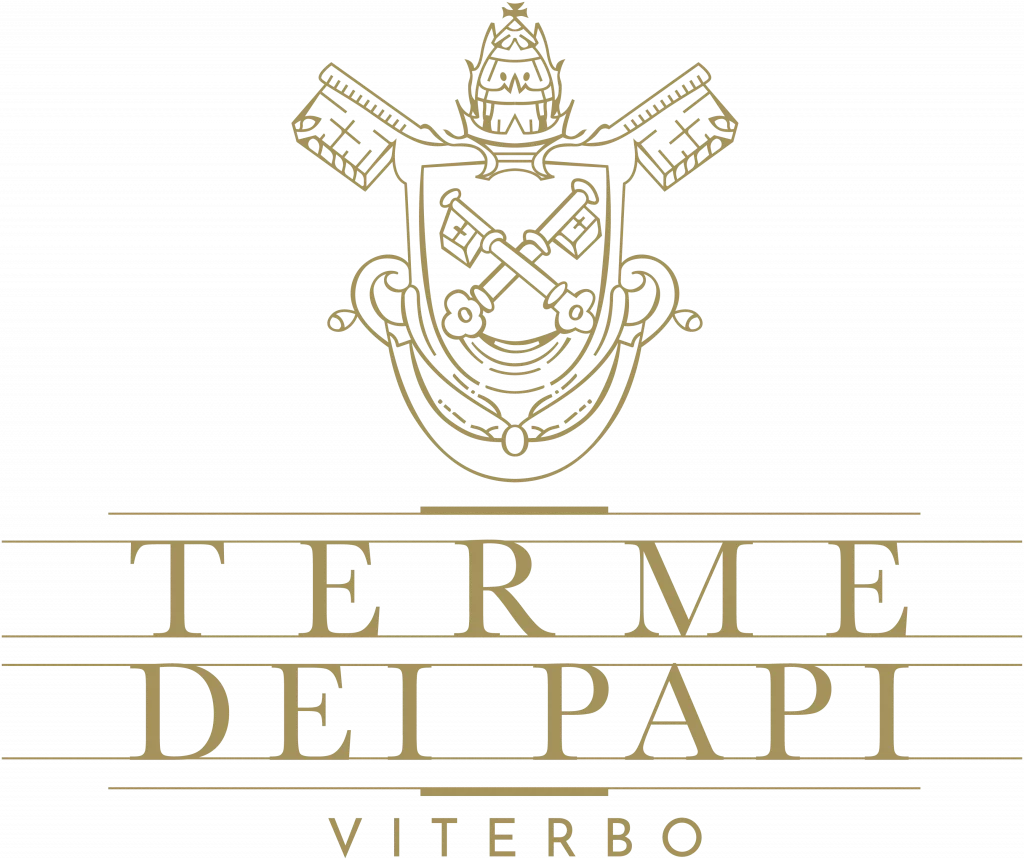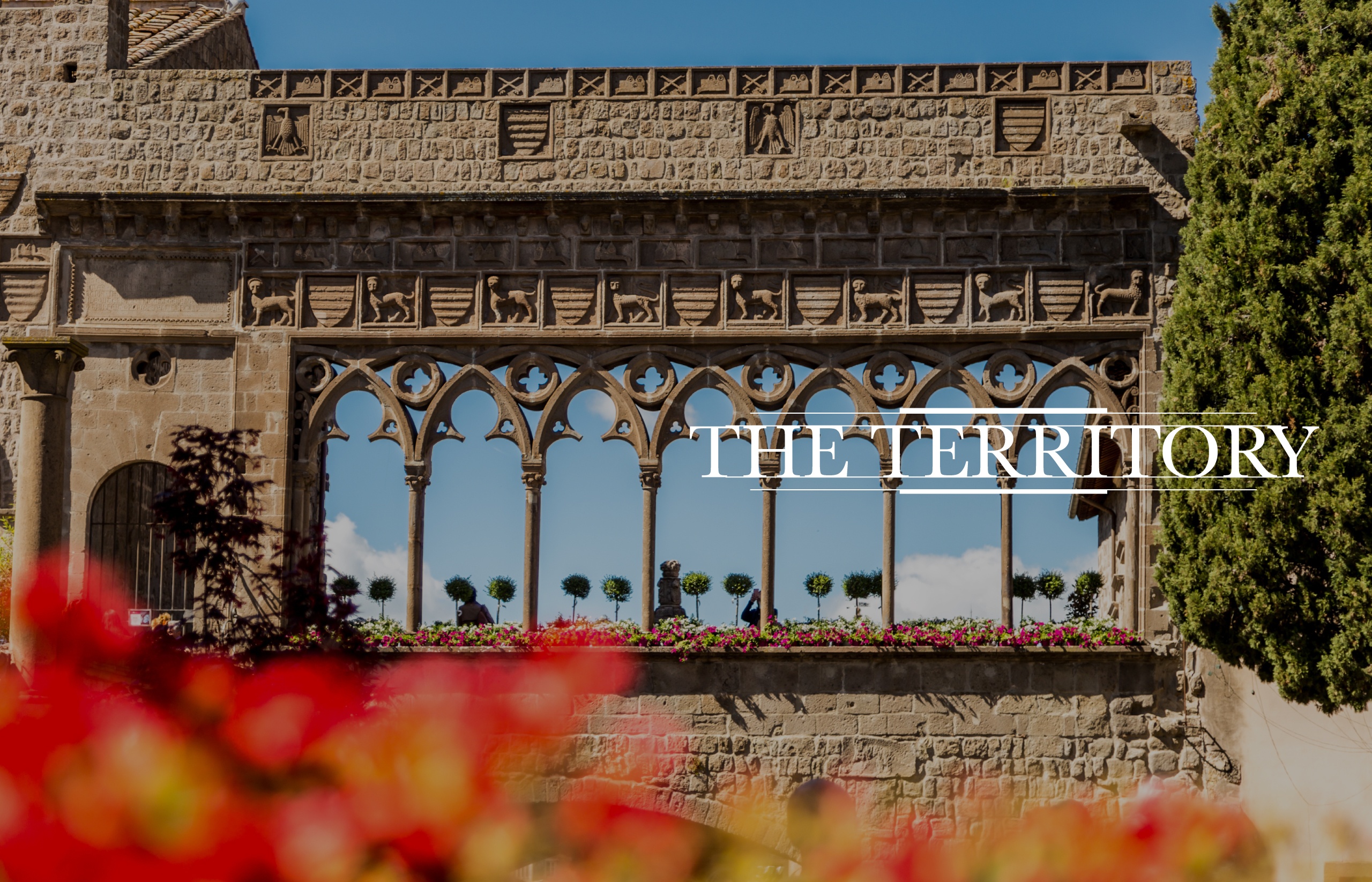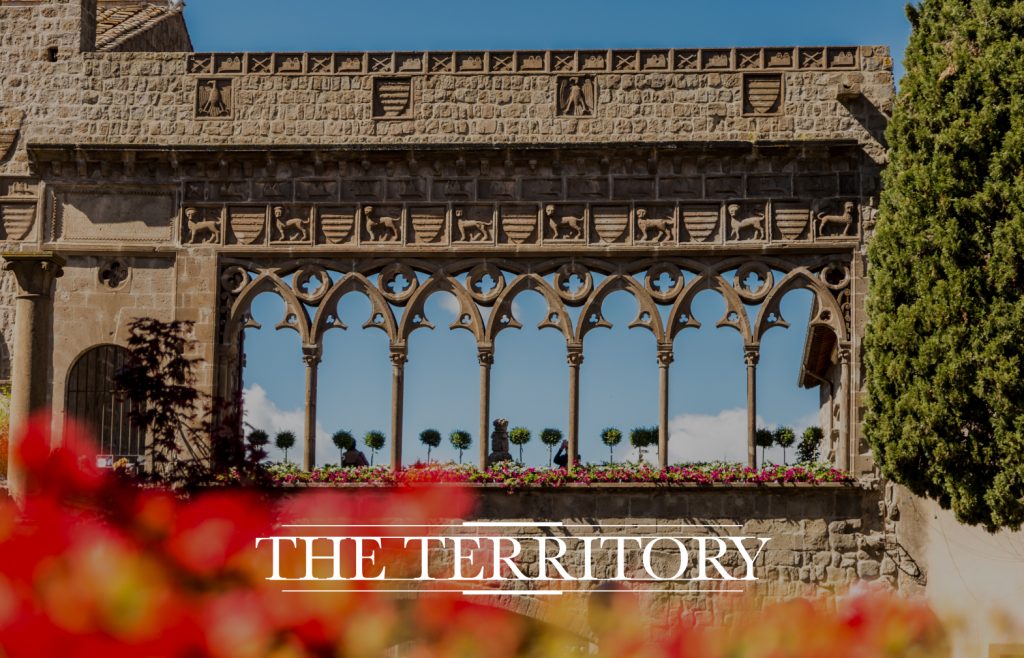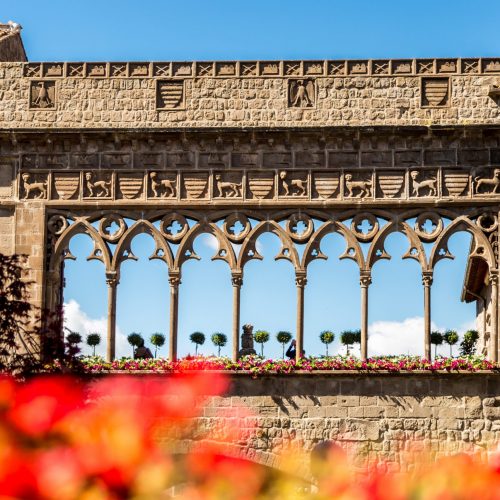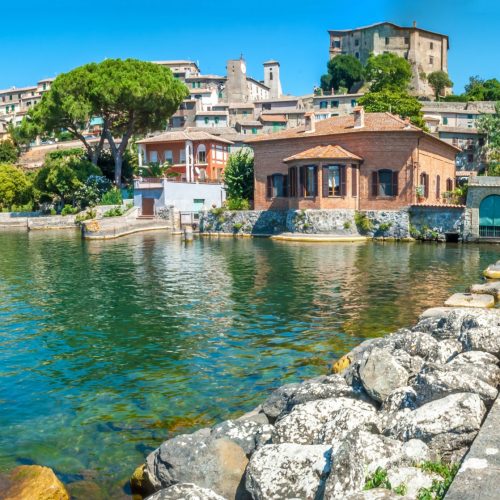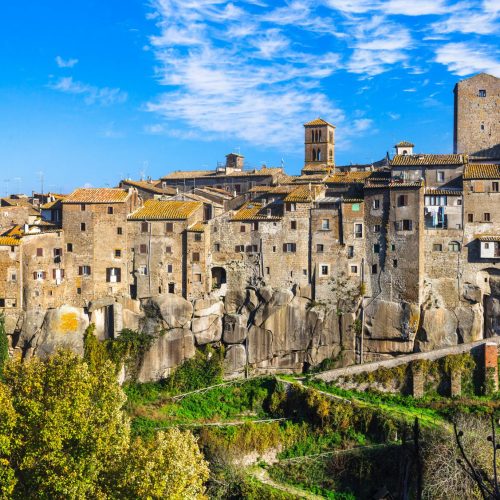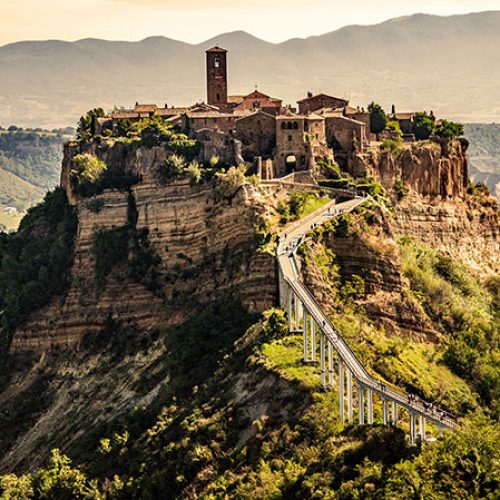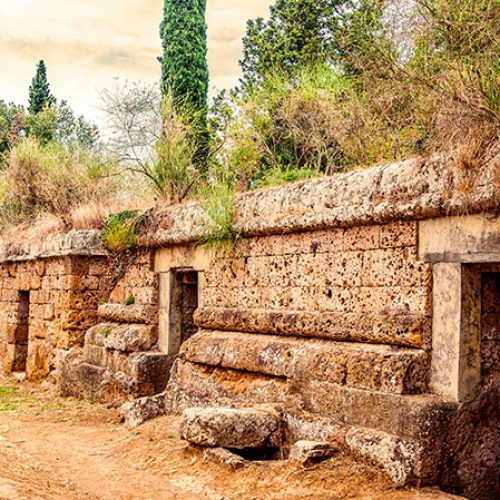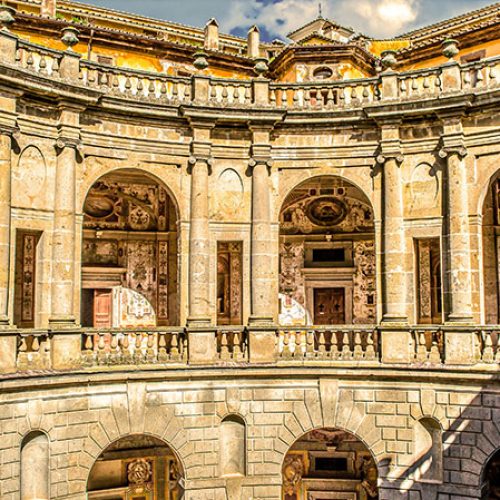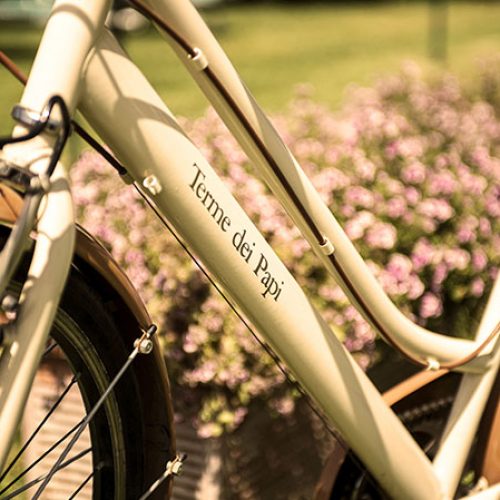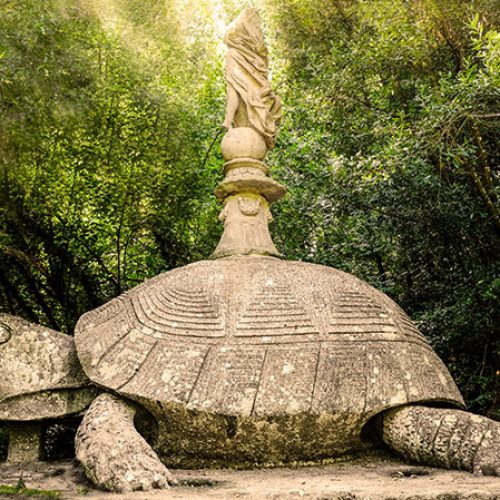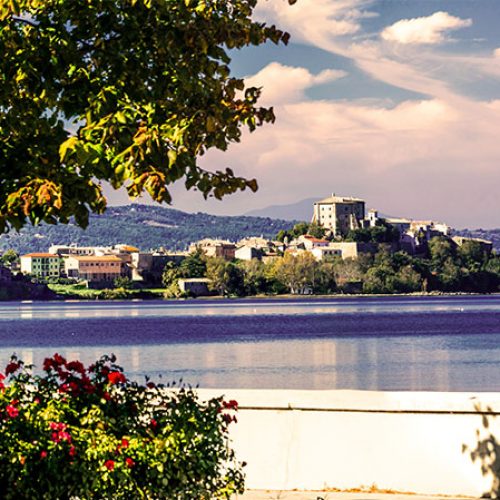VITERBO
The provincial capital has maintained its original structure as an ancient medieval village, and the city centre, the characteristic San Pellegrino district, bears witness to the papal glory of that era. It’s a maze of alleyways, both on the surface and underground (don’t miss the opportunity to visit the Viterbo underground). The village’s ancient dwellings are now home to numerous art shops, where visitors can find a range of original and sometimes very precious items. Boasting Europe’s largest medieval town centre, encircled by perfectly preserved ancient walls and gates, and surrounded by modern districts, Viterbo is known as the City of the Popes: in fact, it was the seat of the papacy during the thirteenth century, and, for about 24 years, the Papal Palace hosted the elections for several Popes using the “conclave” method, a term coined precisely in this city. Bes sure to visit the Roman Theatre of Ferento.
BOMARZO (22 KM)
Bomarzo is a town in the province of Viterbo that’s home to a monumental complex called the Parco dei Mostri, also known as the Sacro Bosco or Villa delle Meraviglie. It consists of a nature park adorned with numerous basalt sculptures depicting mythological animals, gods and monsters, which date back to the 16th century. The park is situated in a coniferous and deciduous forest, covering an area of about 3 hectares. It’s home to a large number of sculptures of various sizes depicting mythological characters and animals, and buildings that reflect the classical world, deliberately ignoring the rules of perspective or aesthetics, in order to create a sense of confusion. While the original reasons for which the park was built remain unknown, it is almost certain that Vicino Orsini simply wanted to create an enchanted place for himself and others to enjoy.
CIVITA DI BAGNOREGIO (30KM)
With just 11 inhabitants, Civita is a hamlet of the municipality of Bagnoregio, in the province of Viterbo, in Italy’s Lazio Region. Famously labelled as “The dying city” by author Bonaventura Tecchi, who spent his youth there, it’s known as one of the most beautiful villages in all of Italy. It’s located in the valley of the badlands, an area located between Lake Bolsena to the west, and the Tiber river valley to the east, in the municipality of Bagnoregio. Civita is only accessible via a reinforced concrete pedestrian bridge, built in 1965. The reason for its isolation is the gradual erosion of the hill and surrounding valley, which has resulted in the characteristic shapes of the gullies. This erosion has continued into the twenty-first century, threatening the village’s very existence, hence the label “the dying city.”
TARQUINIA (40KM)
In Tarquinia, one element of particular archaeological interest is the vast necropolis, namely the Monterozzi necropolis, which contains a large number of tumulus burials, with chambers carved into the rock. These tombs contain an extraordinary series of well-preserved paintings, which simultaneously constitute the best pictorial nucleus of Etruscan art known to have survived to the present, as well as the largest documented find of ancient painting dating back to before the Roman imperial age. The necropolis is part of the group of Etruscan necropolises of Cerveteri and Tarquinia, recognised as a UNESCO World Heritage Site since 2004. The first Etruscan rock necropolis, which by chance was also one of the most spectacular, was discovered in Viterbo in 1817; this is the Necropolis of Castel d’Asso, located just outside the town of Viterbo.
VILLA LANTE(11KM)
Situated in Bagnaia, a hamlet of Viterbo, Villa Lante boasts one of the most famous 16th century Italian gardens, along with that of Bomarzo. Its creation is attributed to Jacopo Barozzi da Vignola. The gardens are Villa Lante’s main attraction, especially the water features, which range from waterfalls, to fountains, and even dripping grottos. Villa Lante also features of two small houses, which, despite being built almost 30 years apart by different owners, are almost identical. The two square buildings have ground floors with rusticated arches, or loggias, which support the first floor above. Each façade on this floor has three windows, with curved and pointed gables in alternation. The Villa is owned by the Italian State, and has been managed by the Lazio Region’s Museum Centre since December of 2014.
PALAZZO FARNESE (22KM)
The Palazzo Farnese (or Villa Farnese) is located in Caprarola, in the province of Viterbo, in the Lazio Region. It’s one of the best examples of a dwelling from the Mannerist era. It was built for the Farnese family. The palace was one of the many stately homes built by the Farnese family within their domains. It is believed to have originally been built with defensive features, as was common among the stately homes of the Lazio region during the 15th and 16th centuries. Once its defensive features were no longer needed, the original structure was radically altered by architect Giacomo Vignola: in fact, while maintaining the pentagonal layout of the original fortification, the building was transformed into a majestic Renaissance palace, which later became the summer residence of the cardinal and his court. It’s owned by the Italian Republic, and has been managed by the Lazio Region’s Museum Centre since 2015.
LAGO DI BOLSENA (32KM)
Lake Bolsena (in Latin: Lacus Volsiniensis/Lacus Volsinii) is a lake in central Italy’s Lazio Region, in the northern part of the province of Viterbo (Alta Tuscia). Formed over 300,000 years ago following the calderic collapse of several volcanoes in the Volsini mountains, which accompanied the volcanic/tectonic sinking of the area, it’s Europe’s largest volcanic lake. It lies just a few kilometres from Mount Amiata, and a considerable portion of it is lined by the Cassia consular road. Lake Bolsena boasts an almost entirely uncontaminated natural environment, and is one of the few large Italian lakes considered to be completely safe for swimming. The lake features two splendid islands: Martana Island and Bisentina Island.
SPORT IN THE TUSCIA REGION
Golf: a fully-equipped and highly renowned golf course is available to all golf lovers, just twenty minutes away by car, near the splendid town of Sutri. Horseback riding: for those who prefer horseback riding, there are several equestrian centres located just five minutes away from Terme dei Papi, offering scenic rides immersed in the beautiful natural surroundings. Padel: for padel lovers, a specialised centre that offers everything needed to play, including courts and players, is located just a few kilometres from the spa. Biking: Terme dei Papi has two rental bicycles available for relaxing rides to Castel d’Asso (3 km) and the historic town centre of Viterbo (4 km).
